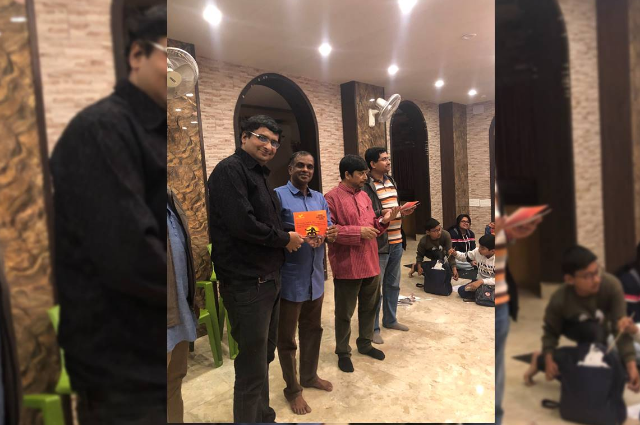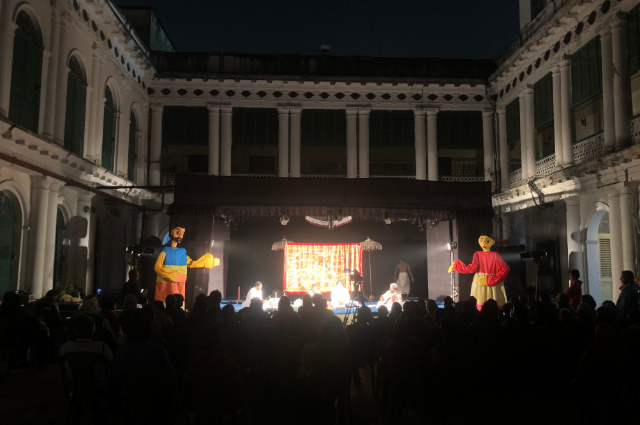
National puppet fair and puppet show at Jorasanko Thakurbari: Kolkata between December 16-18, 2022. These old traditional audiovisual storytelling and communication tools are slowly losing their existence to our modern lifestyle and dominance of social media. However, they still represent one of our greatest national heritage, age-old traditions as well as our glorious history preserved through meticulous artwork, dedicated training, and monumental performance connecting old and modern India through a common string of pride, heritage, and traditions.
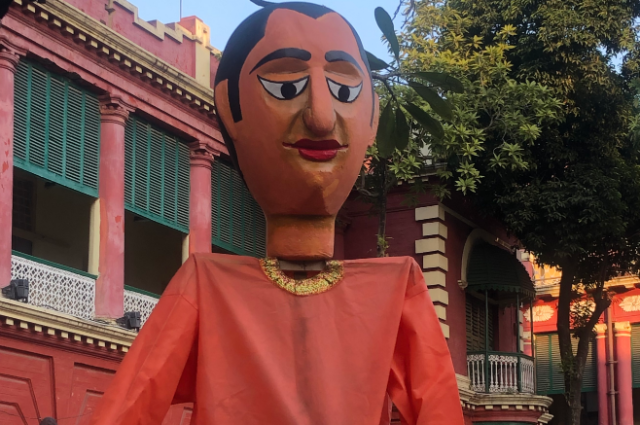
This puppet show was one of a kind. Indeed it was very different and the theme that was throughout was unique. The concept, the blending of light and sound brought out the impact of the show. The orchestra with the sound effects and the puppet's different movements made the whole coordination very impressive. The puppets were also very different and with modern ideas.
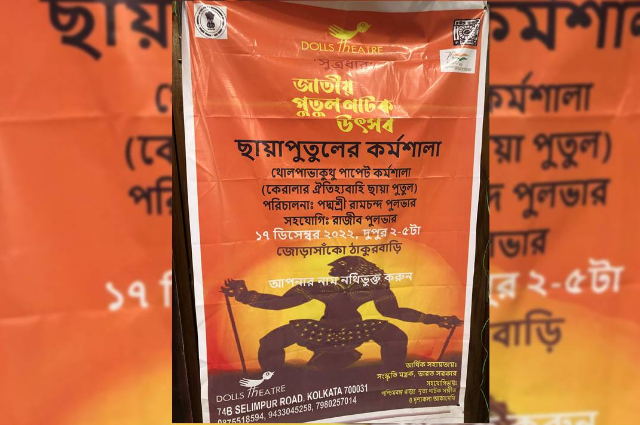
Another day's puppet show was with live characters and was beyond imagination.
The costume, the movements, and the posture of the real humans who created the impressions of live puppets were a very novel idea. The presentation was equally exclusive, and the audience thoroughly enjoyed it. The crowd had a variety of age groups and it was evident that they were from different sections of society and professions. However, the show could capture the attention and there was silence all over and end-to-end excitement. The shows gained a lot of accolades, and all look forward to such exemplary shows every year and more frequently.
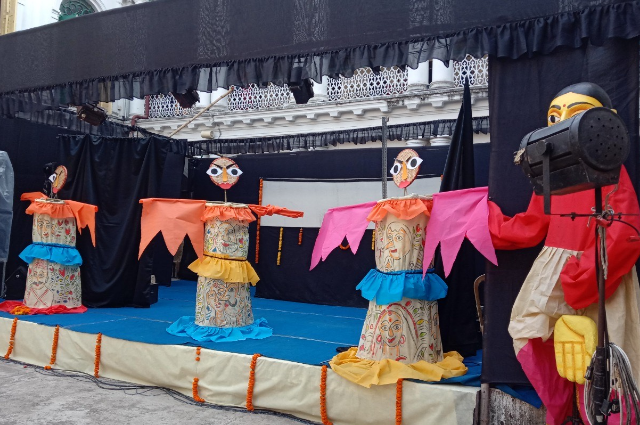
The puppetry fair was a monumental display of the inner expressions of the artists in representing various facets of our society, social customs and religious practices, traditions, and folk tales through the use of puppetry. Various forms of puppetry were displayed on this platform including stick, thread, rod, and hand puppetry, shadow puppetry as well full body puppetry (where an actor acts as a puppet to tell a story interacting with other artists), and last but not the least storytelling puppetry. The piece presented by globally acclaimed storyteller Priyanka Chatterjee with his team using puppetry, classical music, light, and shade with a formidable folklore in Hindu/Urdu was a spectacular performance that left the audience captivated.

If used properly these art forms can serve as outstanding tools for education, awareness, and sensitivity campaigns for ecological and environmental conservation as well as effective science communication tools to reach the mass both in rural as well as urban platforms. The use of traditional tools such as puppetry has immense potential even to this day of overactive social media platforms to deliver awareness about science, health, hygiene, superstitions, religious and caste-based social discrimination, gender equality, education, and well-being of neglected girl child, agriculture and forestry, positive socio-political and socio-religious messages to the public, constructive political awareness and activism as well in teaching about our social values and responsibilities, morality, ethics, and bringing greater good to the contemporary citizen by transforming into educated, sensitive and responsible citizens with empathy for nature as well our society.
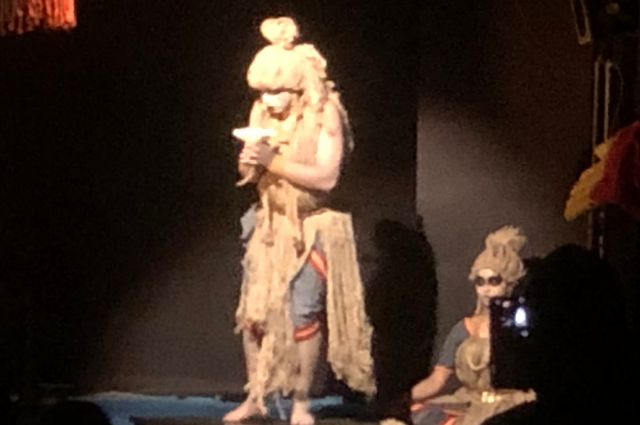
Tholpavakoothu is a form of shadow puppetry that is practiced in Kerala, Tamil Nadu, and India. It is performed using leather puppets and is performed in temples or villages in specially built theatres. Thanks to Sudip Gupta, Director, Doll theatre for conducting an outstanding workshop on shadow puppetry at Jorasanko Thakurbari, Kolkata on December 17th. It was great fun, in making shadow puppets. The workshop participants had the greatest pleasure to meet Padmashree Ramachandra Pulaver and his son Rajiv Pulaver. Ramachandra Pulavar belongs to the 13th generation of puppeteers belonging to the Tholpavakoothu tradition of shadow puppetry from Kerala. The participants had the chance to explore their outstanding skills and entrepreneurship and enjoy the mesmerizing beauty of amazing shadow puppets.
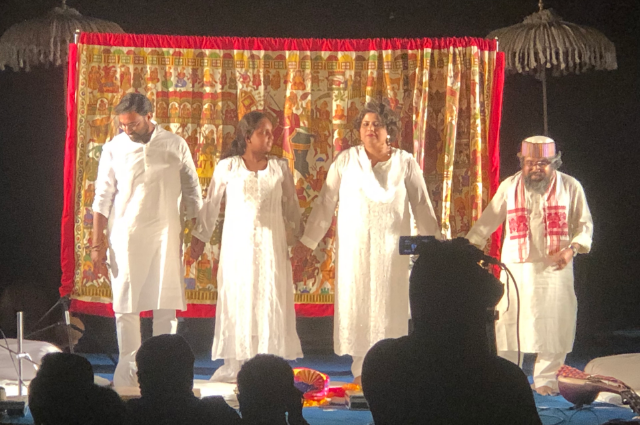
The Puppetry workshop was very interesting. They started the show with a story, the history of puppetry and indeed it was something that many of us were new to and hence found very interesting and unique. The workshop explained how the puppet show came into India and how it was carried through the ages. Different types of puppets and the backgrounds of these puppets were covered. Once again the audience represented different age groups and professions, but all were very keen and looked forward to this unique workshop.
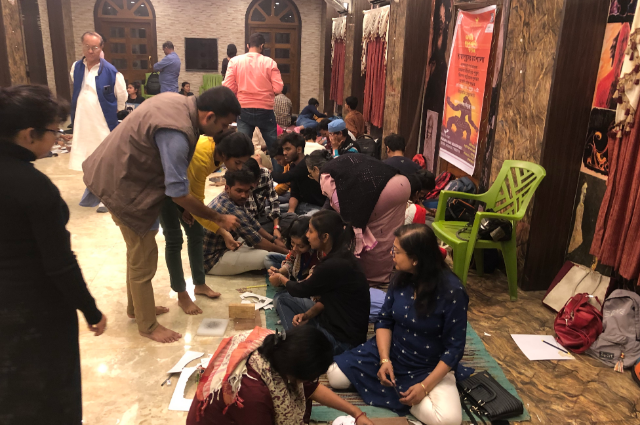
The materials were presented and show how puppets can be made. Also, a screen was made to represent the puppets and the shadow show. While the workshop started and we were asked to break into groups of three, it was very interesting, and irrespective of age we all went back to our childhood keen to use all the material and different items to make the puppets.
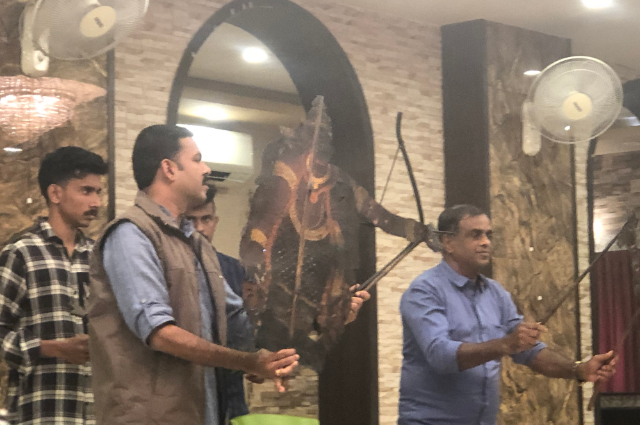
The instructors demonstrated the process and gave innovative ideas on how to proceed, how to use the materials, successfully finish the puppets with the strings and the stocks, and make the designs and cutouts with different tools. Finally, the participants successfully created their puppets. It was a uniquely memorable experience, one of its kind, and participants cherished their experience. A certificate of participation was provided by the organizers and handed by Padmashree Tamchandra Pulavar at the successful completion of the workshop
